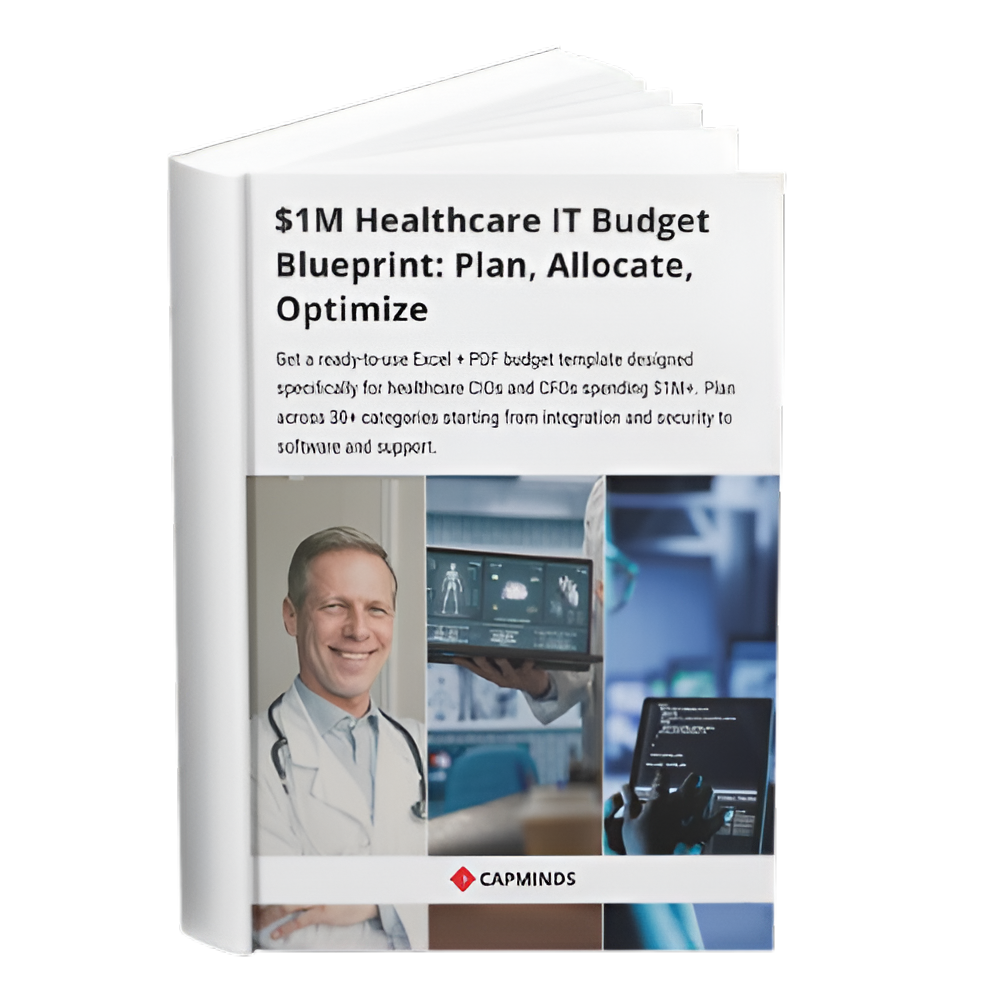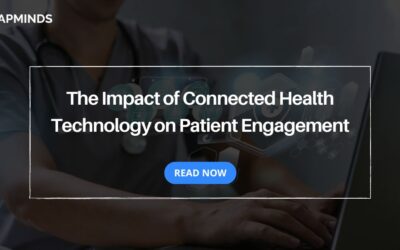Most Popular Health Monitoring Devices Used in 2025
Connected health devices are becoming increasingly important in patient care as healthcare continues to expand outside the limits of clinics and hospitals. These technologies do more than merely monitor health; they empower patients, streamline workflows, and provide clinicians with real-time data.
The demand for smart, connected devices is expected to increase dramatically in both consumer and therapeutic settings by 2025. From chronic disease management to wellness tracking, patients and providers are embracing these advancements.
In this blog, you’ll know the top 15 popular connected health devices in 2025, how they’re changing care, and what’s driving their wide adoption.
What is a Connected Health Device?
A connected health device is a medical or wellness gadget that may collect, transmit, and occasionally analyze health data via a digital connection, such as the internet or Bluetooth.
These gadgets, which are a component of the IoMT, are designed to facilitate patient engagement, real-time care, and remote monitoring.
The following are important characteristics of connected health devices:
- Wireless connectivity such as cellular, Wi-Fi, or Bluetooth
- Syncing data with cloud platforms, EHRs, or mobile apps
- Remote observation for medical professionals and caregivers
- Using insights, reminders, and notifications to engage users
Top 15 Connected Health Devices in 2025
1. Smartwatches with Advanced Health Sensors
Smartwatches have progressed much beyond step counting. By 2025, they will be among the most widely used personal health monitors.
- Check your blood oxygen levels, ECG, heart rate variability, and sleep phases.
- Connect to mobile health apps and provider dashboards with ease.
These devices provide users with information on stress levels, early warning signs of atrial fibrillation, and recovery. Their rising popularity is a consequence of their ongoing development and simplicity of use.
2. Constant Blood Sugar Trackers
CGMs offer real-time glucose monitoring for those with diabetes or prediabetes without requiring finger pricks.
- Real-time blood glucose trends are provided via skin-worn sensors.
- Having high and low alerts might help you stay out of trouble.
CGMs are expected to be widely recommended by 2025 due to increased awareness, insurance coverage, and closer integration with insulin pumps and smartphone applications.
3. Remote Blood Pressure Monitors
These little gadgets now allow people to monitor their blood pressure from the comfort of their own homes and instantaneously communicate the findings with their healthcare providers.
- Bluetooth-enabled gadgets save data on the cloud.
- Providers receive trend information to help them make medication modifications.
With millions of people suffering from hypertension throughout the world, remote blood pressure monitors have become an essential part of chronic illness treatment.
4. Wearable ECG Monitors
Clinical-grade ECG patches and wearables are becoming more popular, even though smartwatches only provide basic ECGs.
- Worn nonstop for at least 24 to 72 hours.
- Find irregular heart rates, arrhythmias, and atrial fibrillation.
For precise outpatient tests without hospital stays, cardiologists rely on them.
5. Smart Thermometers
Especially in post-pandemic care models, smart thermometers are essential for tracking fever and infection symptoms at home.
- Connect with smartphone applications to track symptoms.
- Can notify doctors if the temperature rises over acceptable limits.
These are especially helpful for distant infectious disease management, pediatric care, and elder care.
6. Digital Stethoscopes
Digital stethoscopes are widely used by physicians in 2025 for both virtual and in-person treatment sessions.
- Record high-fidelity lung and heart sounds.
- Send recordings for analysis with AI assistance or remote consultation.
This technology improves the accuracy of diagnoses, particularly in telehealth settings.
7. Pulse Oximeters With Connectivity
More than simply SPO2 is measured via connected pulse oximeters.
- Check the blood oxygen levels and heart rate often.
- beneficial for respiratory conditions, COPD, and post-COVID rehabilitation..
They are frequently included in RPM systems and home health kits.
Related: All About Remote Patient Monitoring(RPM) Devices
8. Smart Inhalers
Smart inhalers monitor medicine use and breathing patterns for patients with asthma and COPD.
- Provide dose tracking and reminders.
- Provide care providers with adherence data.
This technology has been shown to improve everyday management and decrease ER visits.
9. Weight Scales with Connections
Modern smart scales can do much more than merely measure weight.
- Determine the percentage of fat, muscle mass, and water in your body.
- Connect to fitness applications and health sites.
Programs aimed at metabolic disorders, heart health, and obesity make extensive use of them.
10. AI-Powered Sleep Trackers
Advanced sleep trackers are more popular than ever in 2025 as sleep health takes center stage.
- Pay attention to REM, deep sleep, and breathing irregularities.
- Give personalized guidance to improve sleep hygiene.
Some gadgets even work with smart home systems to change the temperature and lighting according to the stages of sleep.
11. Smart Contact Lenses
Smart lenses are becoming popular for continuous intraocular pressure and glucose monitoring; however, they are still in their infancy.
- Make use of biosensors built into the lens’s composition.
- Instantaneously provide input without requiring an external device.
The way diabetes and glaucoma are treated might be completely changed by these innovative devices.
12. ECG Kits for Home Use
These kits offer 12-lead ECG functionality from home, in contrast to wearables.
- Used for follow-ups and remote cardiac evaluations.
- Patients provide information to specialists and record exams.
This improves access to care in underserved or rural regions and lessens the need for clinic visits.
13. Connected Hearing Aids
Hearing aids today are smart, connected devices.
- Bluetooth connection enables phone streaming, TV listening, and audio control through applications.
- AI changes amplification based on the surroundings.
These attributes make them popular among the elderly and people with hearing difficulties.
14. Telehealth-Ready Exam Kits
Connected diagnostic kits are becoming increasingly popular among clinicians as a means of providing high-quality virtual treatment.
- Include a digital otoscope, stethoscope, thermometer, and more.
- Data is exchanged live during video discussions.
These kits fill the gap between virtual and in-person tests, making them crucial for distant healthcare delivery.
15. AI-Integrated Fitness Bands
Fitness bands are no longer simply step counters.
- Using AI analytics, you can track VO2 max, recovery durations, and stress.
- Provide tailored training and wellness suggestions.
In 2025, they will serve both wellness seekers and patients in cardiac rehab, diabetes care, and post-surgery recovery programs.
Why are these devices in High Demand in 2025?
This year’s increase in connected health device usage is being driven by many important factors:
- Chronic Disease Epidemic – The global rise in diabetes, hypertension, and respiratory illnesses needs improved monitoring systems.
- Remote Care Models – With telehealth being widely used, at-home diagnostics and tracking are critical.
- Patient Empowerment – Today’s patients need openness, data access, and tailored insights.
- Provider Efficiency – The real-time data from these devices eliminates guessing and manual input in clinical operations.
- AI and IoT Maturity – These technologies have progressed to provide more accuracy, user experience, and integration.
Empower Connected Care with CapMinds Smart Health Solutions
As healthcare becomes more decentralized, the need for seamless device integration, remote monitoring, and smart care delivery has never been greater. At CapMinds, we help healthcare providers stay ahead with future-ready digital health technologies.
Our expertise lies in integrating connected health devices into your existing systems, enabling smarter workflows, better patient outcomes, and real-time clinical decisions.
With CapMinds, you can:
- Launch Remote Patient Monitoring and Chronic Care Management programs
- Seamlessly integrate smart devices with EHRs and health apps
- Build custom mHealth applications and patient portals
- Enable real-time data exchange through FHIR and HL7 APIs
- Support telehealth with connected diagnostic tools and kits
From strategy to implementation, CapMinds is your trusted partner in digital transformation.
Contact CapMinds today to elevate your connected care journey.




